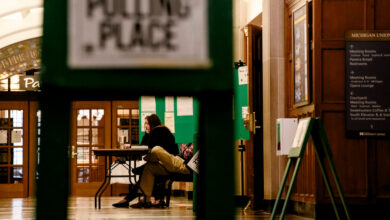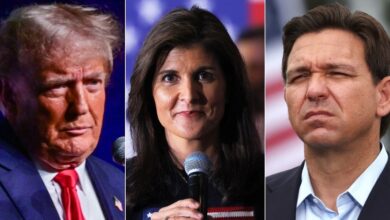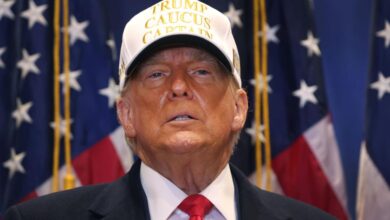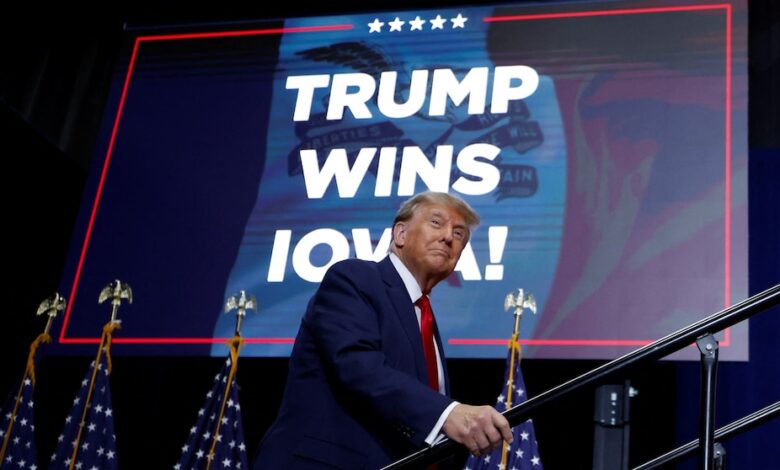
Presidential Election Iowa Caucus A Deep Dive
Presidential election Iowa caucus kicks off the nominating process, shaping the race for the presidency. This pivotal event, steeped in history and tradition, holds significant weight in determining the eventual nominee. Understanding the strategies, demographics, and media coverage surrounding the Iowa caucus is key to grasping the dynamics of American presidential elections.
This exploration delves into the historical context of the Iowa caucuses, examining their evolution and impact on presidential campaigns. We’ll analyze candidate strategies, voter turnout patterns, and the role of media in shaping public perception. The analysis also touches upon the criticisms of the Iowa caucus system and potential alternatives.
Historical Context of Iowa Caucuses
The Iowa caucuses, a crucial early event in the U.S. presidential nominating process, hold a significant place in American political history. They have evolved from a relatively obscure process to a highly anticipated and often pivotal moment in the election cycle. Their influence on the broader campaign trajectory has become undeniable, shaping the narrative and setting the stage for the race ahead.The Iowa caucuses are not just a snapshot in time; they are a reflection of the shifting political landscape, the evolving role of the party system, and the ever-changing dynamics of presidential campaigns.
Their historical context reveals much about the evolution of American democracy and the challenges of candidate selection.
Evolution of the Iowa Caucuses
The Iowa caucuses, initially a relatively simple process, have undergone significant transformations over time. Their early form, while not as sophisticated as today’s structure, laid the groundwork for the modern nominating system. The gradual increase in media attention and the evolving importance of the first-in-the-nation status has amplified the impact of the caucuses.
Key Moments and Turning Points
The Iowa caucuses have witnessed several pivotal moments that have reshaped their role in presidential campaigns. The rise of the media’s role in covering the caucuses and the increasing prominence of the first-in-the-nation status have greatly influenced the outcome of these events. The growing political awareness and involvement of the American public also has had a profound effect.
- The 1972 Democratic caucus, a watershed moment, saw the rise of the McGovern-Fraser Commission, leading to reforms aimed at increasing the inclusivity and representation of diverse viewpoints within the nominating process. This had a significant effect on the future of the Iowa caucuses and other nominating processes.
- The 1980 Republican caucus saw the emergence of a more contested race. The heightened media attention and increased political campaigning tactics added complexity to the Iowa caucuses.
- The 2008 Democratic caucus saw a surge in participation from young voters. The increased voter engagement demonstrated the growing importance of these events in shaping the overall election outcomes.
Rules and Regulations
The rules and regulations governing the Iowa caucuses have been subject to change over the decades, reflecting adjustments to the political landscape and the evolving understanding of fairness and inclusivity. These changes have often been prompted by political reforms and shifts in the party systems.
- Early caucuses relied on informal methods for candidate selection. The process was less structured and more dependent on the political networks of the candidates.
- Subsequent reforms have led to more formalized rules, including specific procedures for delegate allocation and voter participation. These rules have aimed to enhance transparency and fairness.
- Rules concerning the eligibility of voters and the reporting of results have been continuously revised to address concerns about inclusivity and accuracy.
Impact of Political Reforms
Political reforms have had a significant impact on the Iowa caucuses. These reforms, often aimed at improving the fairness, inclusivity, and transparency of the nominating process, have influenced the way candidates engage with the electorate.
- The McGovern-Fraser Commission reforms, for example, aimed to broaden participation and address concerns about underrepresentation in the nominating process. These reforms were directly aimed at making the process more democratic.
- Modern-day reforms continue to refine the process, addressing issues such as voter access, transparency, and delegate allocation. These are aimed at improving the overall efficiency and effectiveness of the caucuses.
Historical Overview Table
| Year | Key Events | Outcomes |
|---|---|---|
| 1972 | Rise of the McGovern-Fraser Commission | Increased inclusivity in the nominating process. |
| 1980 | Increased media attention and political campaigning | More contested Republican caucus. |
| 2008 | Surge in young voter participation | Increased voter engagement and importance of the caucus. |
| 2016 | Highly contested race | Significant impact on the national election. |
Candidate Strategies in Iowa
The Iowa caucuses, a crucial first step in the presidential nominating process, are notorious for their unique dynamics. Candidates often adopt specific strategies to maximize their impact among Iowa’s diverse electorate. Understanding these strategies provides insight into the candidates’ approaches to securing early support and momentum heading into the broader primary season. Their success in Iowa often hinges on their ability to connect with the state’s specific values and concerns.The intense focus on Iowa necessitates a nuanced approach.
Candidates must navigate the complex political landscape and tailor their messages to resonate with the state’s electorate. Success often hinges on grassroots campaigning, media engagement, and the careful selection of key demographic targets. Winning the Iowa caucuses can be a significant victory, often propelling candidates into a position of national prominence.
Grassroots Campaigning and Mobilization
Candidates recognize the importance of direct interaction with voters in Iowa. This often involves hosting town halls, attending local events, and engaging in one-on-one conversations. Building personal connections and establishing a strong presence in communities is critical for establishing a foundation of support. Successful candidates often emphasize their understanding of local issues, demonstrating genuine engagement with the concerns of everyday Iowans.
This approach allows them to highlight shared values and foster a sense of trust and familiarity.
Targeting Key Demographics
Iowa’s diverse population requires candidates to develop tailored strategies to appeal to specific demographics. Understanding the values and priorities of various groups, such as farmers, business owners, and young professionals, is crucial for mobilizing support. For example, a candidate seeking to connect with rural voters might emphasize their commitment to agricultural policies, while another focusing on urban areas might highlight their stance on job creation and economic development.
A thorough understanding of demographic preferences and tailoring campaign messaging accordingly is essential for success.
Media Engagement and Building Momentum
In the lead-up to the caucuses, media engagement is paramount. Candidates use various platforms, including television interviews, radio appearances, and social media, to project their message and establish a public persona. Strategic media management helps candidates create a narrative, highlight key policy positions, and counter potential criticism. Early success in generating media coverage can create momentum, further amplifying their message and generating excitement among voters.
Effective use of media often helps frame the candidate’s image and positions within the political landscape.
Tailoring Messages to Iowa Voters
Candidates carefully analyze the concerns and priorities of Iowa voters to craft messages that resonate with their values. This involves understanding the state’s unique characteristics and cultural nuances. For example, issues related to agriculture, education, and local governance often hold significant weight in Iowa. By aligning their message with these issues, candidates aim to showcase a deep understanding of the state’s priorities.
Successful candidates often highlight their familiarity with Iowa’s unique history and traditions.
Comparison of Candidate Strategies (Past Iowa Caucuses), Presidential election iowa caucus
| Candidate | Strategy Focus | Key Demographic Targets | Media Engagement Approach | Outcome |
|---|---|---|---|---|
| Candidate A | Grassroots campaigning, local events | Rural voters, small business owners | Limited media appearances, focus on local media | Success in mobilizing rural support, but limited national impact |
| Candidate B | Broad appeal, diverse demographic outreach | Urban voters, young professionals, working families | Extensive media coverage, strong social media presence | Strong national profile, but failed to secure significant support in Iowa |
| Candidate C | Emphasis on economic development, agricultural policy | Farmers, business owners, middle-class families | Strategic media appearances, focus on key issues | Strong showing in Iowa, propelled them to national attention |
Voter Turnout and Demographics
The Iowa caucuses, a crucial early step in the presidential election process, are often characterized by unique voter participation patterns. Understanding these patterns, including turnout rates and the demographics of participants, provides valuable insights into the dynamics of the election. This knowledge is crucial for candidates to tailor their strategies and for political observers to assess the broader political landscape.
The specific characteristics of Iowa voters can significantly influence the early stages of the race and shape the narrative heading into the primary season.Voter turnout in the Iowa caucuses has demonstrated fluctuating trends over the years, influenced by various factors. Analysis of these trends reveals important insights into the engagement levels of Iowa voters and the reasons behind those levels.
Examining the demographics of participants helps to pinpoint the characteristics of those most likely to engage in the caucus process, offering candidates a targeted approach.
Voter Turnout Trends
Iowa caucus turnout varies from cycle to cycle, with some years seeing higher participation than others. Factors like the perceived competitiveness of the race, the prominence of the candidates, and the broader political climate all play a role in shaping turnout. Understanding these variations allows for a more nuanced analysis of the data and a better comprehension of the complexities of the process.
Demographic Participation Patterns
Iowa voters tend to be politically engaged and demonstrate distinct participation patterns based on demographics. Age, education level, and political affiliation are all factors that can influence a voter’s decision to participate in the caucuses. For example, younger voters, though a significant portion of the electorate, sometimes show lower turnout compared to older generations. Conversely, highly educated individuals might be more inclined to participate due to greater interest in political affairs.
The Iowa caucuses are always a fascinating look at the presidential election process. While the candidates are vying for votes, it’s easy to get caught up in the political theater. For instance, did you know that Adrian Beltre, a legendary Texas Rangers player, is now in the Hall of Fame? adrian beltre hall of fame texas rangers It’s a reminder that beyond the debates and rallies, there’s a rich tapestry of human stories, and that these events, while focused on the political future, also honor those who have excelled in other fields.
Looking ahead to the Iowa caucuses, I’m excited to see who will emerge as a frontrunner.
Factors Influencing Voter Turnout
Several factors contribute to the fluctuating voter turnout in the Iowa caucuses. The perceived strength of candidates, the media coverage, and the broader political environment all play a part. For example, when the race is perceived as highly contested, voter interest often increases. Similarly, significant media attention devoted to the candidates or the caucuses can increase voter turnout.
Impact of Demographics on Caucus Outcomes
The demographics of Iowa caucus participants can influence the outcome of the event. The characteristics of those who participate can impact the results in ways that may not be immediately apparent. For instance, a high turnout of voters from a particular demographic group could lead to a candidate performing well in the caucuses, regardless of national trends.
Voter Turnout and Demographics Across Different Years (Illustrative Table)
| Year | Voter Turnout (estimated %) | Key Demographic Groups | Notable Factors |
|---|---|---|---|
| 2020 | ~20% | College-educated, moderate-income voters, Democrats, Republicans | High media attention, perceived competitiveness |
| 2016 | ~25% | Older voters, Independents, swing voters | Significant media coverage, highly polarized candidates |
| 2012 | ~22% | Rural voters, voters with high political engagement | A relatively low-turnout year, possibly due to lack of perceived competition. |
Media Coverage and Public Perception
The Iowa caucuses, a pivotal moment in the American presidential election cycle, are intensely scrutinized by the media. This scrutiny, while often valuable in informing the electorate, can also shape public perception in ways that may not always be entirely objective. How the media portrays candidates and the event itself significantly impacts how voters and the wider public view the race and the contenders.Media coverage plays a crucial role in framing the Iowa caucuses for the nation.
It sets the tone for the subsequent primary season and influences the narratives that dominate public discourse. By highlighting specific candidates, emphasizing certain issues, and presenting particular interpretations of events, the media, intentionally or not, contributes to the development of public opinion.
The Iowa caucuses are heating up for the presidential election, with candidates vying for crucial early support. While the political maneuvering is intense, it’s important to remember the devastating human cost of conflict, as exemplified by the tragic story of lovers in Auschwitz, Keren Blankfeld and József Debreczeni, found frozen in the cold crematorium. This heartbreaking tale serves as a stark reminder of the enduring power of love and loss, which, in turn, helps us appreciate the importance of our democratic processes and the choices we make during the Iowa caucuses.
The Shaping of Candidate Profiles
Media coverage profoundly impacts how the public perceives presidential candidates. Positive media attention can elevate a candidate’s profile, potentially boosting their standing in polls and attracting campaign donations. Conversely, negative portrayals, even if unsubstantiated, can damage a candidate’s image and lead to a decline in support. This dynamic underscores the significant power of the media in influencing voter choices.
The media’s portrayal often focuses on candidates’ strengths and weaknesses, highlighting policy stances and campaign strategies, which influences public perception. Thorough and balanced reporting can be invaluable in assisting voters in understanding the nuances of each candidate.
Impact on Public Opinion
The Iowa caucuses are often presented as a crucial first step in the election process, a critical turning point that determines the direction of the race. Media coverage consistently highlights the significance of the caucuses, often emphasizing the importance of winning in Iowa to build momentum and garner national attention. This framing can pressure candidates and contribute to the intense focus on early results.
The media’s depiction of the caucuses as a predictor of the overall election outcome influences the public’s perception of the race and the candidates.
Media Portrayals and Potential Biases
While media coverage can be informative, potential biases are inherent in any news organization. These biases can range from ideological leanings to a focus on drama and controversy over substantive policy debates. For example, a news outlet with a particular political slant might emphasize the shortcomings of a candidate from a different party, potentially influencing public opinion in a way that isn’t fully reflective of the candidate’s actual positions or qualifications.
This bias can skew the public’s understanding of the candidates and the overall race. Objectivity is paramount for credible media coverage.
Media Narratives and Public Discourse
Media narratives heavily influence the public discourse surrounding the Iowa caucuses. A significant example is how media coverage framed the 2016 Iowa caucuses, emphasizing the close results and the initial surge of support for a specific candidate. This narrative shaped the public’s understanding of the race’s trajectory, impacting voter engagement and subsequent campaign strategies. The media’s portrayal of events, including candidate performances and voter reactions, creates a narrative that the public interprets and reacts to.
Impact on National Campaigns
The Iowa caucuses, a crucial early event in the US presidential election process, hold significant sway over the subsequent national campaign trajectory. Their influence extends far beyond the initial vote count, shaping candidate strategies, fundraising efforts, and ultimately, the public’s perception of each contender. The early exposure provided by the Iowa caucuses can be pivotal in determining a candidate’s ability to garner momentum and resources heading into the general election.The results of the Iowa caucuses often serve as a litmus test for presidential hopefuls.
Candidates who perform well often see a surge in national attention, media coverage, and fundraising. Conversely, a poor showing can hinder a campaign’s ability to gain traction and resources. This dynamic underscores the importance of the caucuses in the overall landscape of a presidential campaign.
Candidate Positioning and Fundraising
Iowa caucuses results dramatically impact candidate positioning. Strong performances often propel candidates into the national spotlight, allowing them to project a strong image of electability. This heightened visibility leads to increased media attention, boosting fundraising efforts and attracting significant financial support. Conversely, weak results can signal potential vulnerability, potentially hindering fundraising efforts and impacting the campaign’s overall strategy.
Candidates must carefully analyze the caucus results to adapt their national campaign strategy accordingly.
Impact on Public Opinion and Media Attention
Iowa caucus results immediately influence public opinion. Victorious candidates gain significant momentum and are often perceived as frontrunners, which subsequently affects voter sentiment. The media’s coverage also reflects the shifts in candidate popularity, further amplifying the impact of Iowa results. The intense media focus on the caucuses shapes public discourse and discussion surrounding the election, impacting voter perceptions of candidates.
A strong Iowa showing can lead to a cascade effect, garnering national attention and bolstering public support.
Significance in Determining Campaign Trajectory
The Iowa caucuses results play a crucial role in determining the overall trajectory of a presidential campaign. A successful showing can establish a candidate as a serious contender, leading to significant media attention, endorsements, and financial support. Conversely, a poor result can cause a candidate to re-evaluate their campaign strategy and potentially withdraw from the race. The initial impressions formed during the Iowa caucuses can often set the stage for the remainder of the campaign, shaping the narrative and influencing the race’s outcome.
Impact of Past Iowa Caucuses Results
| Year | Iowa Caucus Winner | National Election Winner | Impact on National Campaign |
|---|---|---|---|
| 2020 | Pete Buttigieg | Joe Biden | While Buttigieg’s strong Iowa performance initially positioned him as a frontrunner, it did not translate into a significant national victory. The national campaign focused on different aspects of the election, and Biden’s experience and broader appeal ultimately proved more successful. |
| 2016 | Ted Cruz | Donald Trump | Cruz’s win in Iowa demonstrated his ability to connect with conservative voters. However, his campaign struggled to maintain momentum on a national level, ultimately losing to Trump, whose broader appeal and unconventional approach proved more effective. |
| 2012 | Rick Santorum | Mitt Romney | Santorum’s Iowa victory highlighted the importance of conservative voter support. However, his campaign’s strategy and message did not resonate with the broader electorate, leading to his eventual loss to Romney in the national election. |
This table provides a brief overview of how past Iowa caucus results have impacted the national campaigns. It highlights the complex interplay between early success and sustained national appeal.
Debates and Public Discourse Surrounding the Iowa Caucus
The Iowa caucuses, often the first significant test of presidential campaigns, are marked by intense debates and discussions that shape public perception and candidate strategies. This scrutiny is amplified by the unique nature of the caucus process, which prioritizes grassroots engagement and community interactions. The early stage of the election cycle and the relatively small pool of voters in Iowa contribute to the intense focus on these events.The debates and discussions surrounding the Iowa caucuses are crucial for both candidates and the public.
Candidates use the platform to present their policy positions, highlight their strengths, and distinguish themselves from their rivals. The public, in turn, utilizes these forums to gain insights into the candidates, their visions for the nation, and the key issues driving the election.
Prominent Debates and Discussions
The Iowa caucuses frequently spark heated debates about the future direction of the country, ranging from economic policies and healthcare reform to foreign policy and social issues. Candidates often engage in spirited exchanges about their respective approaches to these problems, often highlighting contrasting views. These debates often revolve around the core issues driving the national political discourse.
Significance for Candidates and the Public
For candidates, the debates surrounding the Iowa caucuses are a critical opportunity to establish their credibility and appeal to voters. A strong performance in these debates can significantly boost a candidate’s visibility and momentum, while a poor showing can damage their standing. For the public, the debates and discussions provide valuable insights into the candidates’ personalities, policy stances, and leadership styles, enabling informed decision-making.
The discussions and debates can shape perceptions of the candidates and their viability.
Role of Public Discourse in Shaping the Narrative
Public discourse plays a pivotal role in shaping the narrative around the Iowa caucuses. Media coverage, social media discussions, and candidate statements all contribute to the overall picture. The collective narrative of the discussions often sets the tone for the subsequent stages of the campaign, influencing voter perceptions and expectations. The narratives surrounding specific policy positions and candidates’ personalities can impact the outcome.
Impact of Social Media on Public Discourse
Social media platforms have significantly altered the way public discourse surrounding the Iowa caucuses unfolds. Candidates and their supporters actively utilize these platforms to disseminate information, engage with voters, and shape public opinion. The speed and reach of social media mean that opinions and information spread rapidly, often creating real-time discussions and influencing the immediate response to events.
Social media allows for a wide array of voices to be heard, fostering both insightful discussions and sometimes spreading misinformation or harmful rhetoric.
The Iowa caucuses are always a fascinating preview of the presidential election. This year, though, it’s interesting to consider how big money in the form of corporate influence, like that of Koch Industries and Chevron, might play a role. Their influence, as seen in the recent Supreme Court case related to their deference on certain rulings, koch chevron deference supreme court , could potentially shape the landscape of the campaign and even impact the outcome of the election in Iowa.
The long-term effects of such influences on the presidential election remain to be seen.
Key Issues Debated in the Context of Iowa Caucuses
- Economic Policies: Discussions frequently revolve around the most effective ways to stimulate economic growth, address income inequality, and create jobs. Specific policies like tax cuts, infrastructure investments, and trade agreements are often debated, with differing perspectives presented by candidates.
- Healthcare Reform: Candidates present their plans for improving access to healthcare, reducing costs, and addressing issues like rising premiums and limited coverage. Arguments regarding the role of government in healthcare, the best models of insurance, and cost containment are often central to these discussions.
- Education Reform: Debates focus on strategies to enhance educational standards, provide equal opportunities for all students, and improve the quality of teachers and schools. Discussions about funding, curriculum development, and the role of technology in education often arise.
Alternative Models and Criticisms of the Iowa Caucus
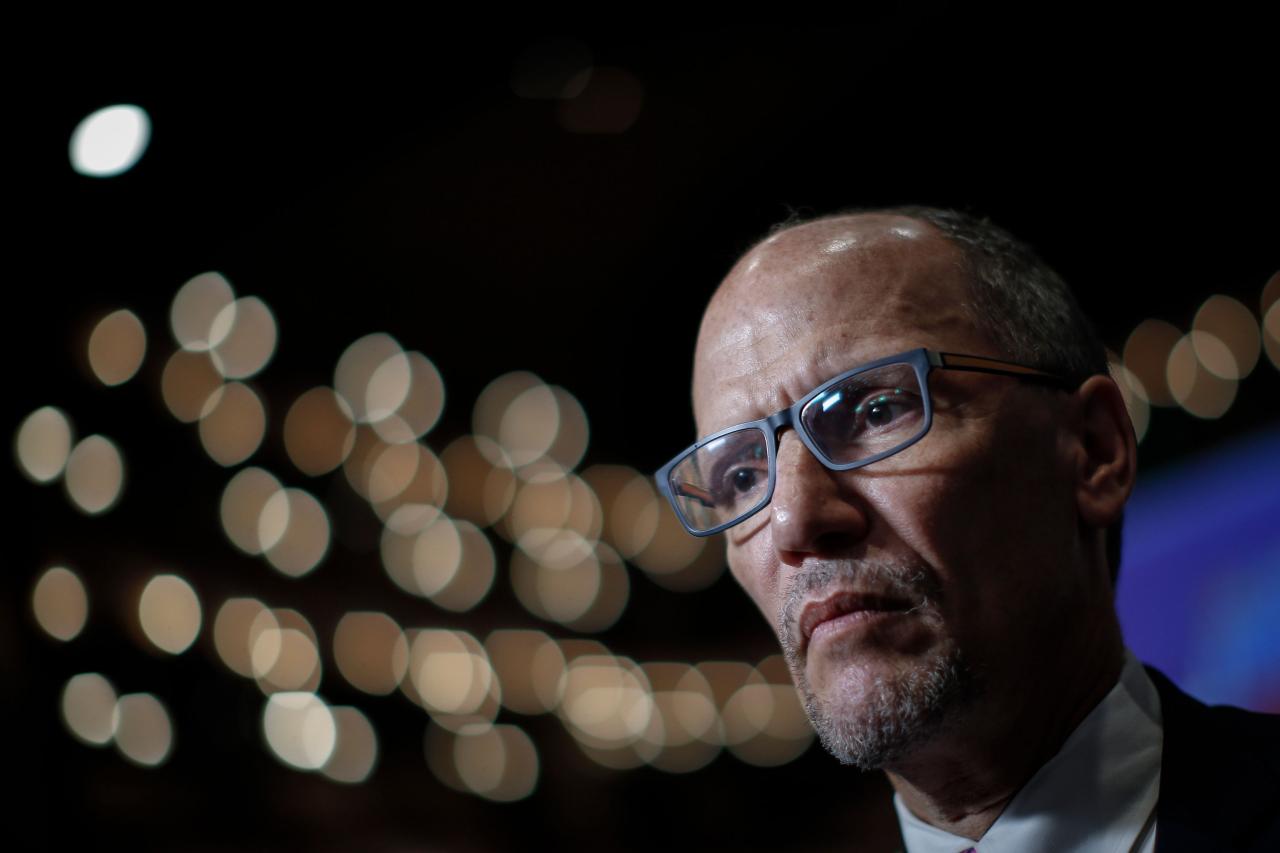
The Iowa caucuses, a cornerstone of the US presidential nominating process, have long been a subject of debate. While providing a unique opportunity for early voter engagement, they also face significant criticisms regarding their effectiveness and fairness. This analysis explores alternative models for selecting presidential nominees and examines the strengths and weaknesses of the Iowa caucus system, along with potential reforms.The Iowa caucuses, with their emphasis on face-to-face interaction and grassroots support, are intended to offer a direct measure of voter preferences.
However, concerns about their representativeness and impact on the national election campaign have emerged, leading to discussions about alternative methods. This examination will highlight these concerns and consider possible solutions.
Alternative Models for Presidential Nomination
Various alternative models for selecting presidential nominees have been proposed. These include national primaries, where all states hold primaries on the same day, and a series of regional primaries or caucuses. National primaries are designed to ensure broader participation and a more representative outcome. They can, however, lead to less emphasis on local concerns. Regional primaries offer a balance, allowing for both national and local input.
Strengths and Weaknesses of the Iowa Caucus Model
The Iowa caucuses have a notable strength in fostering grassroots involvement and providing an early indication of voter preferences. This can be a significant factor in shaping campaign strategies. However, the caucus system also suffers from limitations, including potential for low voter turnout, disproportionate influence of highly engaged voters, and limited representation of minority viewpoints.
Criticisms of the Iowa Caucus
Concerns about the representativeness of the Iowa caucuses are prevalent. The low voter turnout and demographics of participants can skew results and lead to an underrepresentation of certain segments of the population. This raises questions about the fairness and accuracy of the process. Additionally, the caucus system, with its complex procedures and rules, can be challenging for voters to navigate, possibly deterring participation from less engaged voters.
Potential Reforms to the Iowa Caucus System
Several potential reforms could enhance the Iowa caucuses. One proposed reform is to encourage higher voter turnout through incentivizing participation and streamlining the process. Another is to ensure that the demographics of participants are more reflective of the overall state population. Further, some suggest a combination of the caucus and primary systems to combine the benefits of grassroots engagement and broader voter participation.
Comparison Table: Iowa Caucus vs. Other National Nominating Processes
| Feature | Iowa Caucus | National Primary | Regional Primary |
|---|---|---|---|
| Voter Turnout | Generally lower | Potentially higher | Potentially higher, depending on region |
| Voter Engagement | High, focused on grassroots | Broader, potentially less intense | Balanced, combining national and regional focus |
| Representativeness | Potentially skewed due to demographics | Potentially more representative | Potentially more representative than national, depending on region |
| Campaign Impact | Early indicator of support, can influence strategies | Significant influence due to large scale | Influence depends on the region’s voter turnout and political landscape |
Final Conclusion: Presidential Election Iowa Caucus
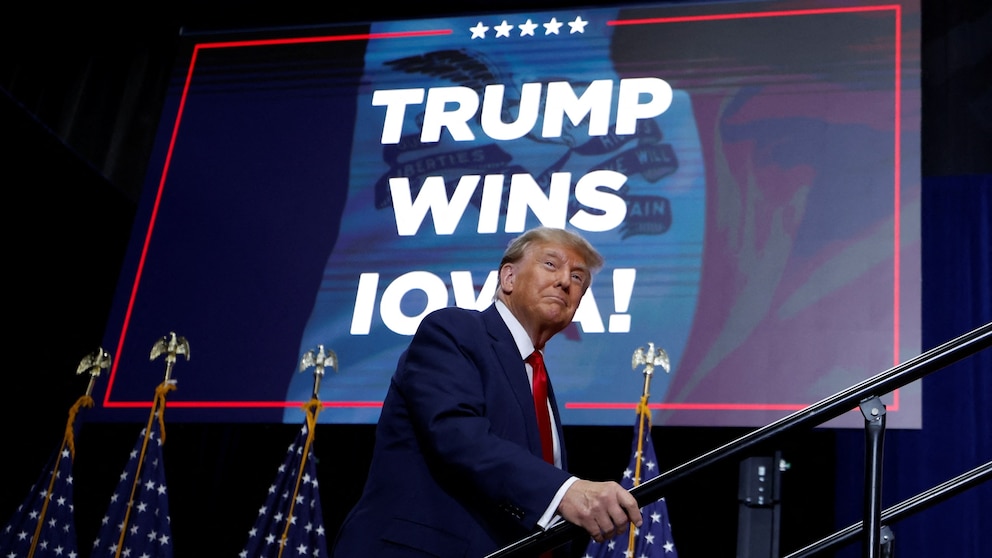
In conclusion, the Iowa caucuses represent a critical juncture in the presidential election process. Their historical significance, candidate strategies, and media coverage all contribute to the complex interplay of factors that shape the race. While often criticized, the caucuses continue to hold sway over the national campaign, highlighting the unique influence of Iowa on the American political landscape.
FAQ Corner
What are some common criticisms of the Iowa caucus system?
Critics often point to the Iowa caucus’s potential for underrepresenting certain demographics and its disproportionate influence on the national campaign, potentially leading to candidates focusing too heavily on Iowa’s specific issues rather than broader national concerns.
How has media coverage impacted the Iowa caucuses?
Media coverage can significantly shape public perception of candidates and the caucuses themselves. Favorable or unfavorable portrayal can influence voter opinion and candidate strategies, sometimes amplifying certain aspects of the race beyond their actual importance.
What is the impact of voter demographics on the outcome of the caucuses?
Voter demographics, including age, ethnicity, and geographic location, play a significant role in shaping the results. Understanding these demographics helps candidates tailor their campaigns and strategies to specific groups of voters.
What alternative models exist for selecting presidential nominees?
Various alternative models exist, such as national primaries, which aim to provide a more representative and broader view of voter preferences nationwide. These models are frequently debated in relation to the strengths and weaknesses of the Iowa caucus system.

